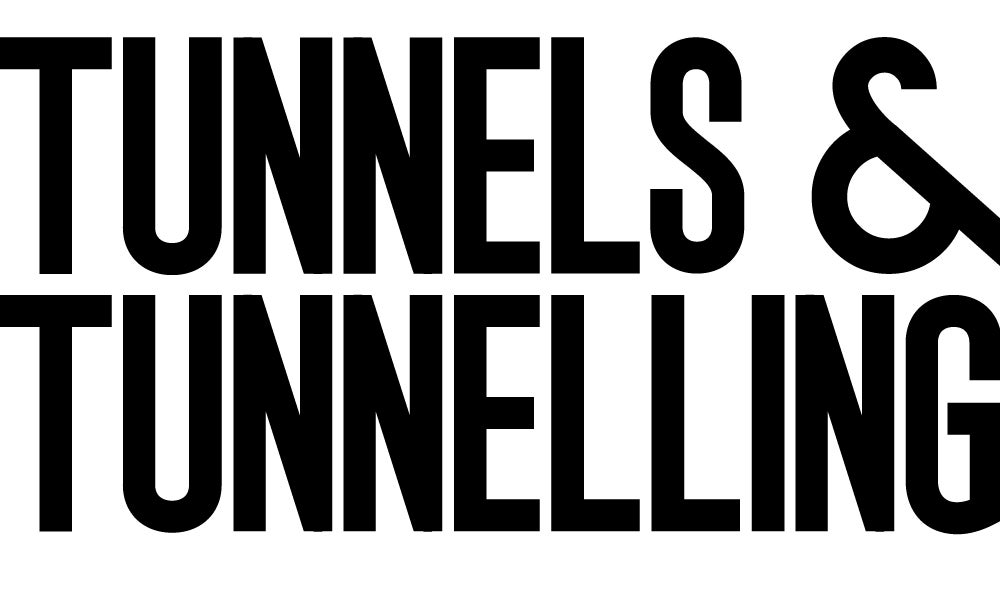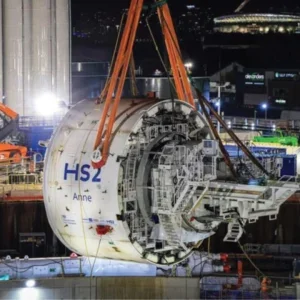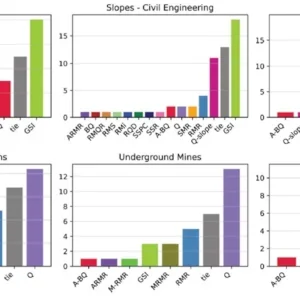Beneath the Pedal Boats and the beach towels on San Foca beach in Puglia, southern Italy, a microtunnel has been constructed to connect the onshore and offshore pipes of the Trans Adriatic Pipeline (TAP) project.
Although local opposition to the project was intense, there has been no noticeable impact on the beach, or indeed any early sunbathers. Excavation works began in January and were complete by the end of April. Disassembly was completed in May.
The USD 5.28bn TAP is the last stage of the ‘Southern Gas Corridor’, which will transport gas from the Caspian region into Europe, making landfall in Italy. The pipeline solution eliminates the need for major shipping operations, reducing environmental impact and providing a more reliable supply.
The European reception plant for this supply is located approximately 9km from San Foca village, there is an onshore pipe that runs 8.2km towards the sea, joins a 1.5km-long, 3m OD microtunnel at a point some 700m from the shore. The microtunnel then runs under the beach and out to meet the offshore pipeline.
The onshore works, landfall microtunnel and 45km of the offshore pipeline (to the edge of Italian territorial waters) form ‘TAP Italy’.
“If there were the opportunity to do the project again, I would not change anything,” says Yuri Picco, project manager for ICOP. “We have not met any major issues in terms of excavation progress, water ingress or any structural problems with the jacking pipes.”
A point of pride for Picco is that no interjack stations were needed along the drive and higher frictions during excavation were not encountered due to a good overcut, good lubrication of the overcut and good handling of the slurry.
The maximum thrust required was 1,100t and the pipes were designed to take a nominal thrust of 2,000t. The final section of the drive averaged about 800t. The contractors said that they would consider using interjacks at about 1,500-1,600t.
The 512 pipe units have an outside diameter of 3,000mm and an inside diameter of 2,400mm, with a total length of 3m.
The pipes were specially designed for the project and produced by an Italian supplier named ILCEV. The jacking pipes are reinforced with one internal and one external steel spiral (d=10mm) and with internal and external longitudinal steel rebars (d=8mm). Steel stirrups (d=8mm) are used to reinforce the pipe ends.
For the drive there were two options: a TBM and segmental lining approach or pipe jacking. A pipe jack with a Herrenknecht AVN machine was chosen because it was expected to yield greater advance rates and a lower impact, as the pipe sections are monolithic and there is no need to perform stabilisation grouting. However, as a contingency measure, the machine was designed to be capable of switching to a segmental lining system.
With this system the casing of the tunnel will be constructed inside the tunnel with concrete segments by means of a push module (like in the TBM for tunnels). Using this system the movement to advance only involves the machine elements and the push module (total length of about 22m) instead of the whole tunnel. Frictional forces are lower, but it requires more effort terms of safety, additional equipment (rails, grouting system etc). Also the cost and production rate is lower than the jacking system.
The cutterhead was a mixed ground type, capable of dealing with sand, silts and soft rock along the drive. Performance was good and although the machine was equipped with an air lock for hyperbaric interventions, this was not needed. There were no surprises from the ground and everything was as shown in the preliminary studies.
The alignment was mainly found to be through Salento Calcarenite, including sandy limestone, which has undergone a process of cementification. Silts and clays were encountered from Ch. 0+800 to Ch. 1+300m of the drive, and on this section the team had to slow down production to allow more time for slurry treatment. However, this was expected, and the material was handled on site by a dedicated separation plant that was equipped with vibrating screens, desanders, de-silters and decanters.
Advance rates were between 18.5 and 19m per day, with infrequent peaks as high as 30m.
Fabrizio Cultrera, TAP geologist explains that the spoil composition is the result of the geological formations, which are dismembered during the excavation. “Between 1,350m and 1,540m we noticed the transition from the Calcareniti del Salento and Holocene deposits, which are not lithoid but loose sediments. We also found some fine sands among the Holocene deposits, encountered as result of different compositions of the seawater including calcium carbonate and silica.
“However, we didn’t have issues with the geological formations during the excavation because the MTBM was well matched with the type of ground. We also didn’t meet any sinkholes, fortunately.”
There were no issues of water ingress as all the pipe seals held. Spoil was stored on-site in dedicated waterproof containers. It was tested for its characteristics. Depending on the results, for example if it contained a lot of salt water, it would be sent to one of several external treatment plants.
Offshore exit
The offshore exit for the landfall TBM is still to be completed, but should be done by December. A careful study by Saipem was necessary to avoid any impact on the sensitive marine environment. This was described in an earlier feature (see Tunnels and Tunnelling International, August 2018, pp.28- 30). The offshore exit was constructed and will be undertaken in the following phases:
1) The installation of a sheet pile cofferdam, which allows the volume of the trench and the amount of geostatic loading materials to be minimised. It also reduced the impact on the local Cymodocea meadows – a species of seagrass that has required protection
2) The removal of loading materials and further excavation to recover the machine
3) Filling the machine with compressed air to avoid water ingress during retrieval
4) Flooding the tunnel with the use of special valves on the TBM, which will be activated by divers. This will eliminate the pressure differential and allow the TBM to be disconnected from the last concrete pipe more easily.
“We also had to prepare the lower section of the concrete pipes to ensure that our client doesn’t have any obstacles, like steps along the tunnel lining, where the [914mm] product pipe could get stuck during its pulling operation,” says Picco.
An environmental monitoring plan for all of these works includes buoys to constantly monitor the turbidity of the seawater during the excavation and backfilling operations at the exit point. This is important to measure the level of turbidity, and whether this is more or less than that produced by normal currents.
“We will evaluate the actions to be applied as per the measures included in the environmental monitoring plan. For example, if we realise that we are causing too much turbidity, excavation works will have to be slowed down until an acceptable level is reached again. We expect that the turbidity would be minimal, as the TBM will arrive at the exit point [under the sea bed].”
Second Tunnel
The landfall project includes a 96m-long onshore tunnel to connect the thrust pit for the main drive to the end-point of the product pipe, which will be pulled through the landfall tunnel after tunnelling works complete. This tunnel will be lined with a steel pipe and bored by a Herrenknecht AVN 1200, equipped with overcutters to increase the cut to 1.42m.






